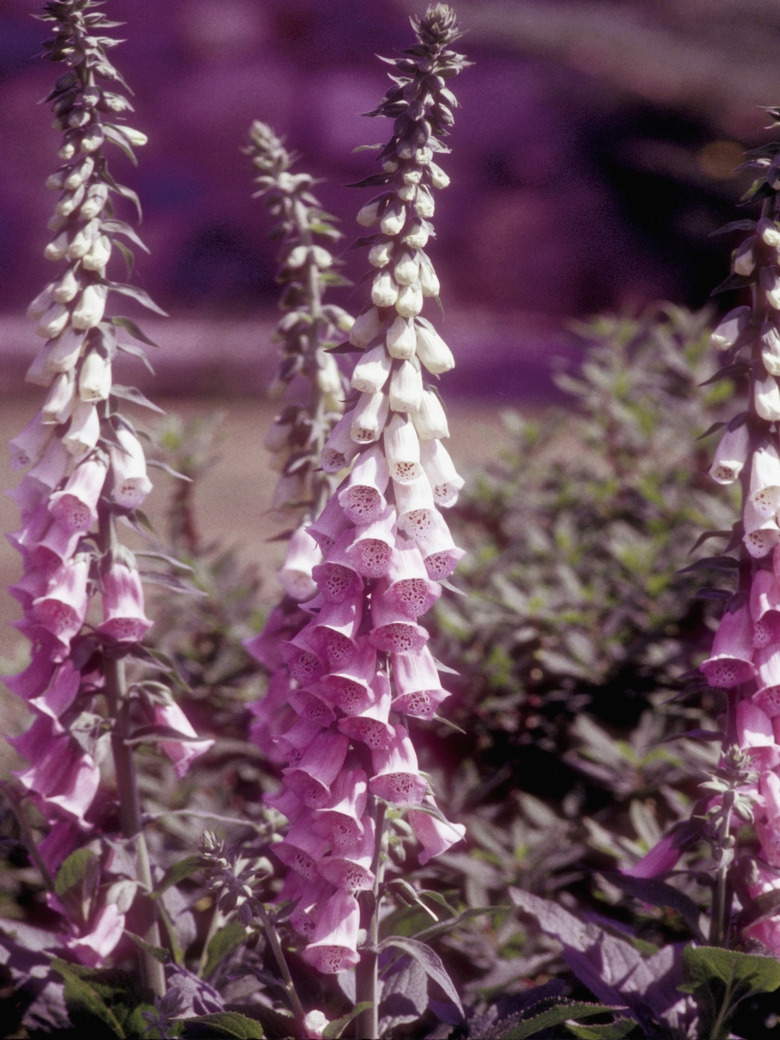How To Deadhead Foxgloves
Easily identifiable by their spikes of bell-shaped flowers, foxgloves (Digitalis purpurea) bloom in late -spring through summer. Individual blooms reach 2 to 3 inches tall and droop along 2- to-5-foot-long stems. Foxgloves thrive in U.S. Department of Agriculture plant hardiness zones 4 through 8 in full to partial sunlight and fast-draining, acidic soils. Once foxglove blooms fade and begin to drop, the flower spike becomes unsightly. Regular deadheading promotes a second flush of blooms while keeping the plants looking neat.
Step 1
Step 1
Pour 1 part bleach and 3 parts water into a bowl. Move the bowl gently back and forth to swirl the liquids, combining them into a 25 percent bleach solution.
- Easily identifiable by their spikes of bell-shaped flowers, foxgloves (Digitalis purpurea) bloom in late -spring through summer.
Step 2
Step 2
Wipe off any dirt or debris clinging to the blades of pruning shears or pruning snips with a paper towel. Submerge the blades in the bleach solution, leaving them to soak for at least five minutes. Blot the blades dry with a cloth.
Step 3
Step 3
Select a foxglove flower spike with at least 75 percent of its blooms faded, wilting or missing. Grasp the stalk in one hand to steady it. Cut through the stem at a 45-degree angle with the pruning shears or snips, 1/4 inch above the first or second set of leaves just below the flowering portion. Repeat this process to remove all spent flower spikes from the plant.
- Wipe off any dirt or debris clinging to the blades of pruning shears or pruning snips with a paper towel.
- Cut through the stem at a 45-degree angle with the pruning shears or snips, 1/4 inch above the first or second set of leaves just below the flowering portion.
Step 4
Step 4
Cut each removed flower spike into 3- to-4-inch-long sections with the shears. Place the discarded sections in a bucket or other container. Gather up any fallen leaves, petals or stems from the ground around the plant's base, placing them in the bucket or container with the spikes. Discard the plant material on a compost pile or in a trash bin.
Step 5
Step 5
Deadhead any flowers that appear in a second flush of blooming once 75 percent of their blooms fade or drop. Cut each flower spike 1/4 inch above a set of leaves or growth node 2 to 3 inches above ground level. Discard the flower spikes in the same manner as before.
- Cut each removed flower spike into 3- to-4-inch-long sections with the shears.
- Gather up any fallen leaves, petals or stems from the ground around the plant's base, placing them in the bucket or container with the spikes.
Tip
If you want additional plants to grow next season, leave a few flower spikes from the second flush of blooming on the foxglove plant, allowing them to produce and disperse seeds. Cut the flower spikes back to ground level after they release their seeds.
Warning
Foxglove plants produce poisonous leaves and seeds. Do not ingest any portion of this plant. Keep children and pets away from foxgloves to prevent injury.
Warning
Foxgloves have become invasive in some regions of the United States. Check with your local county extension office to determine the invasive potential of these perennials in your area before planting.
Things Needed
- Bleach
- Water
- Bowl
- Paper towel
- Pruning shears or pruning snips
- Cloth
- Bucket or container
References
- National Gardening Association: Foxglove
- Missouri Botanical Garden: Digitalis Purpurea
- The Well-Tended Perennial Garden: Planting & Pruning Techniques; Tracy DiSabato-Aust
- Better Homes & Gardens Perennial Gardening; Julie Martens et al.
- University of Florida IFAS Extension: Disinfecting Pruning Tools
